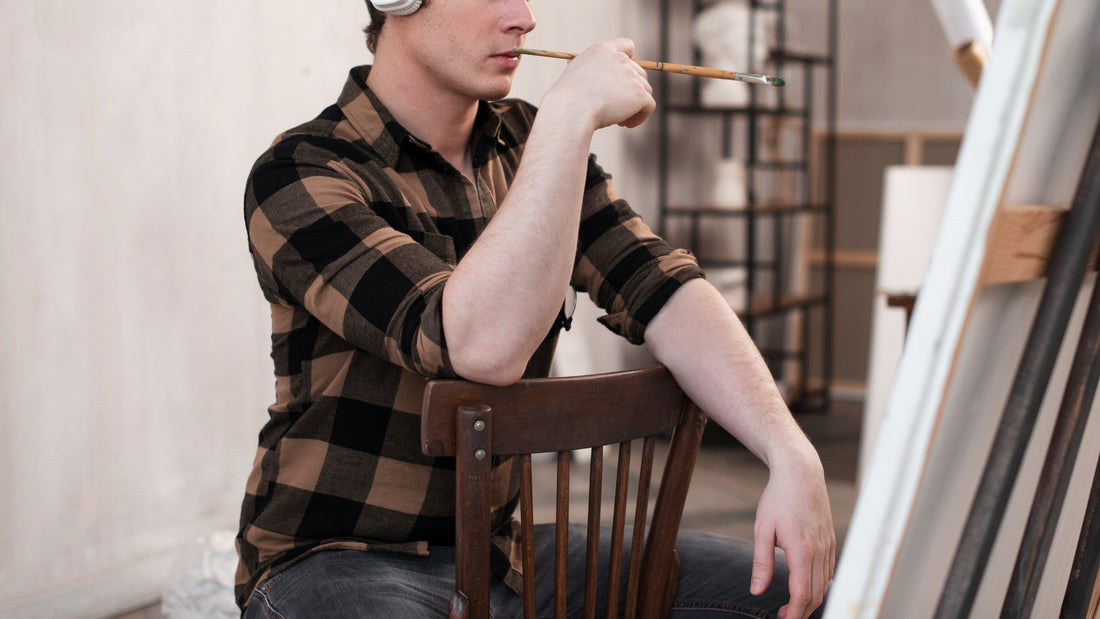
How to Fix Common Mistakes While Painting By Numbers
Share
Painting by numbers can be a relaxing and rewarding hobby, allowing you to create beautiful works of art with precision and ease. However, even the most experienced painters can make mistakes from time to time. Whether you accidentally paint outside the lines, use the wrong color, or apply too much paint, it's important to know how to effectively correct these errors without feeling discouraged.
Below are some of the most common mistakes made while painting by numbers followed by some practical tips on how to correct them, so that you’ll be well prepared for the next time you accidentally make a mistake in your own painting.
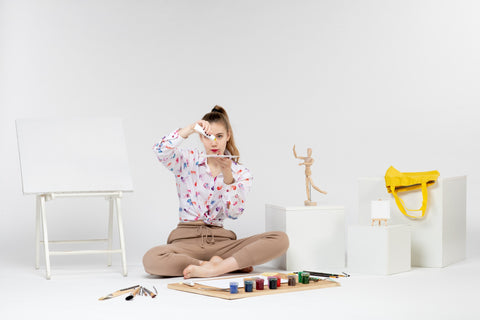
Common Mistakes Made While Painting by Numbers
0.1 Painting Outside the Lines
One of the most prevalent mistakes in painting by numbers is painting outside the designated lines. Whether it's due to a slip of the brush or a momentary lapse in concentration, it can be frustrating to see your artwork marred by stray brushstrokes.
0.2 Using the Wrong Color
Another common mistake is using the wrong color on a specific numbered section. This can happen when the colors in the kit are similar or when you accidentally misinterpret the color key.
0.3 Applying Too Much or Too Little Paint
Achieving the right amount of paint on your brush is crucial for maintaining the desired texture and appearance of your painting. Applying too much paint can result in a messy and uneven finish, while using too little can create patchy and incomplete areas.
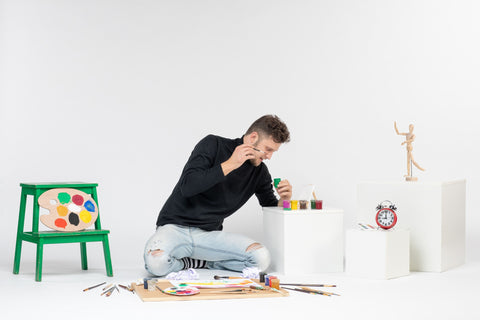
How to Correct Mistakes Made While Painting by Numbers
1.1 Fixing a Misplaced Stroke
If you accidentally paint outside the lines or make a stroke in the wrong area, don't panic. Here are a few ways to correct this mistake:
- Blending technique:Gently blend the misplaced stroke with the surrounding colors using a small brush or a cotton swab. This will help to camouflage the mistake and create a seamless transition.
- Scraping technique:Use a toothpick or a razor blade to carefully scrape off the misplaced paint. Be cautious not to damage the underlying layers of paint or the canvas. Once removed, you can then repaint the area correctly.
- Covering technique:If the mistake is minor, you can cover it by applying the correct color over the misplaced stroke. Make sure to match the color and blend it seamlessly with the surrounding areas.
1.2 Correcting a Wrong Color
Using the wrong color on a numbered section can be frustrating, but here are a few methods for correcting this mistake:
- Washing technique:If the wrong color is still wet, you can try washing it off with a damp brush, sponge, or cotton swab. Gently dab the area until the color fades, and then carefully blot the excess moisture with a clean cloth. Once dry, you can reapply the correct color.
- Layering technique:If the wrong color has dried, you can layer the correct color on top. Start by applying a thin layer of the correct color and gradually build up the intensity until it matches the surrounding areas. Remember to let each layer dry before adding another.
- Color blending technique:In some cases, you can blend the wrong color with the correct color to create a new shade. Experiment with mixing the two colors on your palette until you achieve a suitable match.
1.3 Adjusting the Paint Volume
Applying too much or too little paint can affect the overall appearance of your painting. To adjust the paint volume:
- Removing excess paint:If you've applied too much paint, gently blot the excess with a clean cloth or paper towel. Be careful not to smudge the surrounding areas.
- Adding more paint:If you've used too little paint and the area looks patchy or incomplete, simply apply more paint to achieve the desired coverage. Take your time and ensure that the newly applied paint blends seamlessly with the existing layers.
By employing these techniques, you can effectively correct mistakes made while painting by numbers and restore the integrity of your artwork. Remember, practice makes perfect, and don't be afraid to experiment and learn from your mistakes. While it's essential to know how to correct mistakes, it's even better to prevent them from happening in the first place.
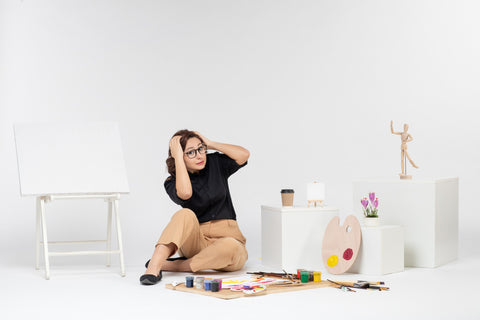
Preventing Mistakes in Painting by Numbers
By taking a proactive approach and implementing certain strategies, you can minimize the occurrence of errors while painting by numbers. In this section you’ll find various tips to help you prevent mistakes and create a smooth painting experience.
2.1 Practicing Patience
One of the primary causes of mistakes in painting by numbers is rushing through the process. Impatience can lead to careless brushstrokes and inaccurate color application. To prevent this, cultivate patience and take your time with each step. Allow the paint to dry before moving on to the next section and focus on maintaining a steady hand and a calm mindset.
2.2 Using a Magnifying Glass
Sometimes, the numbered sections in a paint by numbers kit can be quite small, making it challenging to see the details clearly. Using a magnifying glass can help you see the numbers and lines more clearly, reducing the chances of painting in the wrong section. Invest in a good quality magnifying glass that provides a clear and magnified view of the canvas.
2.3 Maintaining a Clean Workspace
A cluttered and messy workspace can lead to confusion and mistakes. Keep your painting area organized and tidy by clearing away unnecessary items and ensuring you have enough space to comfortably work. This will help you stay focused and avoid accidentally mixing up colors or misplacing your brush.
2.4 Checking Colors Before Application
Before applying the paint to the canvas, it's crucial to double-check the color you are using. Refer to the color key and compare it to the paint on your palette or in the paint pots. This step will help minimize the chances of using the wrong paint color.
2.5 Practicing Proper Brush Care
Taking care of your brushes is essential for maintaining their quality. Clean your brushes thoroughly after each painting session to remove any residual paint. Additionally, make sure to use the appropriate brush size and type for each section to ensure precise and accurate application.
By implementing these preventive measures, you can significantly reduce the likelihood of making mistakes while painting by numbers. However, if mistakes do occur, remember that they are an opportunity for growth and learning. Let’s explore how you can turn your mistakes into artistic opportunities.
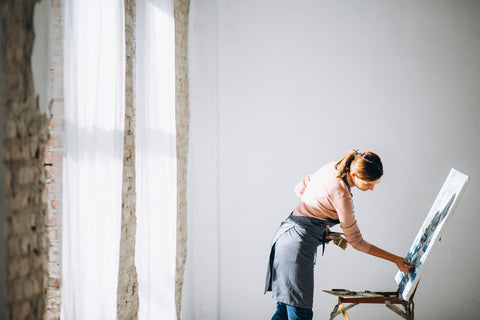
How to Make the Most of Your Mistakes
Mistakes are an inevitable part of any creative process, including paint by numbers. However, instead of viewing mistakes as failures, you can embrace them as opportunities for growth and artistic exploration.
3.1 Learning from Mistakes
Every mistake provides a valuable lesson. Take the time to analyze your mistakes and understand why they happened. Was it a result of rushing, lack of focus, or unfamiliarity with a specific technique? Identifying the root cause allows you to learn from your mistakes and make adjustments in your future approach. Use each mistake as a stepping stone towards improvement and refinement of your painting skills.
3.2 Turning Mistakes into Artistic Opportunities
Sometimes, mistakes can lead to unexpected and interesting artistic outcomes. Embrace the accidental brushstrokes or color variations and see if they can be incorporated into your painting. Experiment with different techniques to blend or enhance the mistake, turning it into a unique feature of your artwork. Remember, art is subjective, and what may seem like a mistake to you could be seen as a creative choice by others.
3.3 Using Mistakes to Develop New Techniques
Mistakes can also be a catalyst for discovering new artistic techniques. As you try to correct a mistake, you may stumble upon a new way of applying paint, blending colors, or creating textures. Embrace these discoveries and incorporate them into your future artworks. By pushing the boundaries and embracing experimentation, you can develop a unique artistic style that sets your paintings apart.
3.4 Seeking Support and Feedback
Don't be afraid to seek support and feedback from fellow artists or art communities. Share your mistakes and ask for suggestions on how to address them or incorporate them into your artwork. Engaging with others who share your passion can provide valuable insights and encouragement, helping you grow as an artist.
Summary
Making mistakes while painting by numbers is a normal part of the creative process. However, it's important to approach these mistakes with a positive mindset and use them as opportunities for growth and artistic development. By understanding the basics of painting by numbers, recognizing common mistakes, and learning how to correct them, you can enhance your painting skills and create beautiful works of art.
Remember to practice patience, use a magnifying glass to see details clearly, maintain a clean workspace, and double-check colors before application to prevent mistakes. If mistakes do occur, don't be discouraged. Instead, learn from them, turn them into artistic opportunities, and embrace the unexpected outcomes they may bring. Seek support and feedback from fellow artists to gain valuable insights and encouragement.
Ultimately, painting by numbers is a journey that allows you to express your creativity and enjoy the process of creating art. Embrace the imperfections, learn from your mistakes, and let them guide you towards new techniques and artistic discoveries. With each painting, you'll grow as an artist and develop your unique style.
Happy painting!
